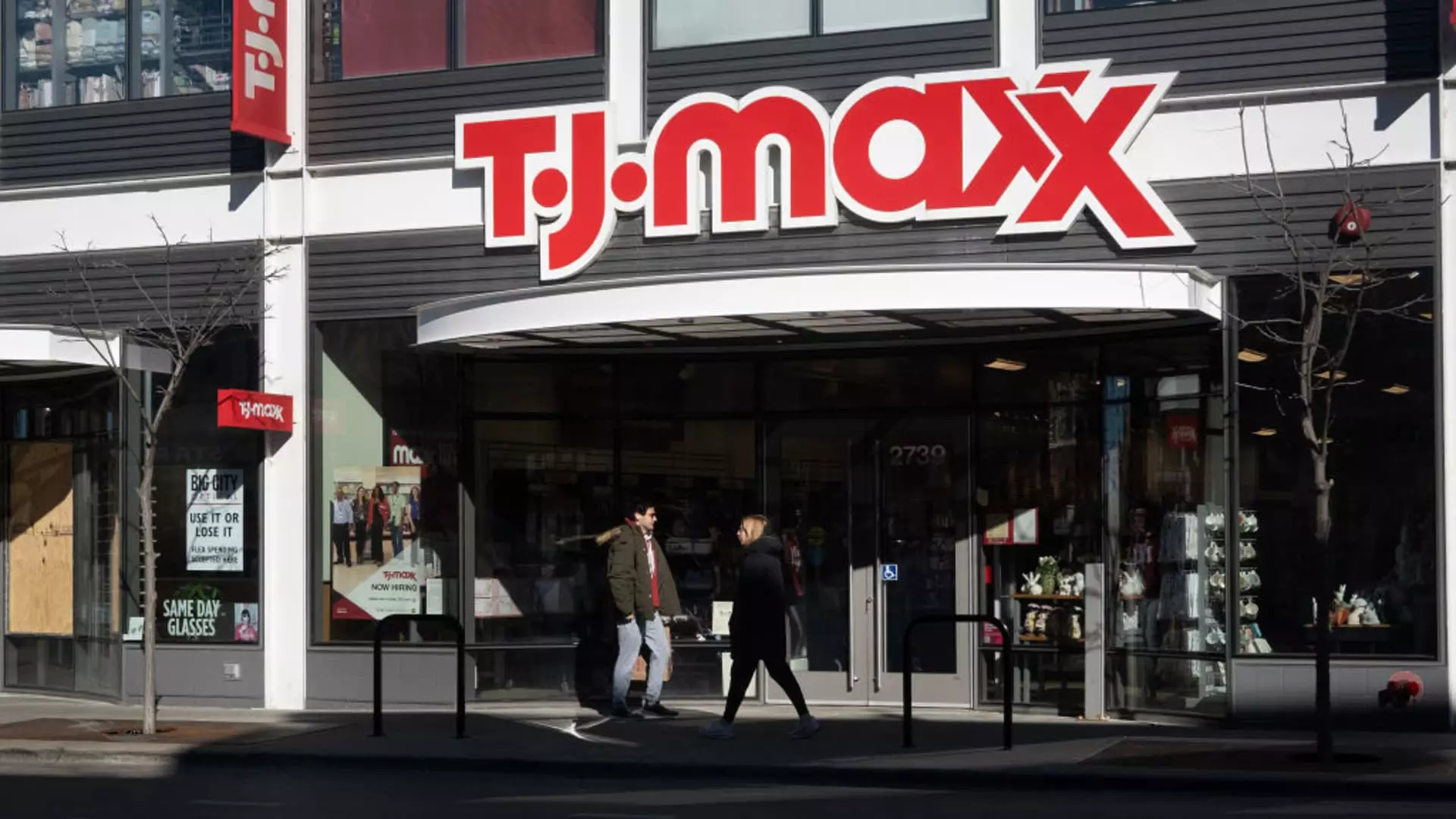In the world of retail, the holiday season often serves as a critical barometer for a company’s performance. TJX Companies, the parent of popular off-price retailers like T.J. Maxx, Marshalls, and HomeGoods, recently revealed what it deemed a “strong start” to the holiday shopping season. However, beneath the surface of optimistic statements lurks a narrative of cautious guidance that has investors raising eyebrows. The company’s fiscal results for the third quarter might have exceeded expectations, yet the projected earnings for the upcoming holiday quarter fell short of what analysts anticipated.
Fiscal Performance: A Closer Look
TJX reported earnings per share (EPS) of $1.14, surpassing the anticipated $1.09. Furthermore, the retailer’s revenue climbed to $14.06 billion, edging ahead of the expected $13.95 billion. This year-over-year growth reflects a commendable 6% increase from the previous $13.27 billion. Additionally, the company’s net income was $1.30 billion during the quarter, showing a healthy rise from $1.19 billion a year prior.
Despite these positive indicators, a closer inspection of TJX’s guidance for the holiday quarter reveals potential pitfalls. The company estimates its EPS will fall between $1.12 and $1.14, which is notably shy of analysts’ expectations of $1.18. Such discrepancies can be telling, suggesting perhaps that even in seasons of strong consumer spending, the company recognizes limitations in growth potential.
One of the critical components of TJX’s success has been its unique positioning as a value-oriented retailer. CEO Ernie Herrman pointed out that customer transactions were a significant driver of comparable sales increases, emphasizing the company’s appeal to bargain-hunters. The concept of “treasure hunt shopping,” where consumers can find discounts on high-quality merchandise, resonates especially well with budget-conscious shoppers and those seeking value without sacrificing quality.
As the retailer gears up for the holiday season, an appeal to diverse consumer bases—particularly younger shoppers who do not associate off-price shopping with stigma—remains a focal point in their strategy. However, the efficacy of this approach becomes questionable as the company provides its sales growth outlook. A projected 2% to 3% increase in same-store sales for the holiday quarter aligns closely with market predictions, but it reiterates the company’s cautious stance vis-à-vis an unpredictable economy.
Diving deeper into various segments, it becomes evident that not all departments within TJX are performing uniformly. The Marmaxx division, encompassing key banners like T.J. Maxx and Marshalls, posted a mere 2% increase in comparable sales, a significant decline from the impressive 7% registered during the same time last year. Similar trends surfaced in other divisions like HomeGoods, which saw a decrease from their prior year’s growth rate of 9% to just 3%.
Interestingly, the starker contrast came from the TJX International division, which showed resilience with a robust 7% growth, significantly better compared to just 1% last year. This suggests that while the domestic landscape may be experiencing a slowdown, international markets might present growth opportunities. Highlighting this effort, TJX’s recent ventures such as entering the European market and forging a partnership with Brands for Less in Dubai signal an eagerness to diversify and explore lucrative off-price potential.
While comparison to previous year’s performance yields a mix of results, external factors also play a crucial role. Analysts have voiced concerns successively about how weather patterns could disproportionately affect off-price retailers like TJX. Generally, these types of companies are more sensitive to seasonal changes: an unusually warm October could dissuade shoppers from purchasing winter apparel like coats, which could dramatically impact sales.
In light of this, it’s worth noting that although there was apprehension regarding potential weather-related challenges, the warmer-than-usual autumn did not seem to negatively impact TJX’s sales as anticipated. This resilience might indicate that consumers’ value-driven shopping tendencies could render them adaptable, purchasing items as needed rather than waiting for temperature changes.
While TJX Companies presents a facade of robust growth, a nuanced examination underscores a nuanced narrative. The company may boast of exceeding past profit expectations, but the subdued projections for the holiday quarter and mixed performance across divisions reveal the challenges that lie ahead. As they prepare for the busy shopping season, striking a balance between nurturing growth while maintaining consumer engagement remains crucial for sustaining their market position. Investors and analysts alike will be watching closely to see if TJX can navigate these complexities while staying true to its value-oriented roots.

